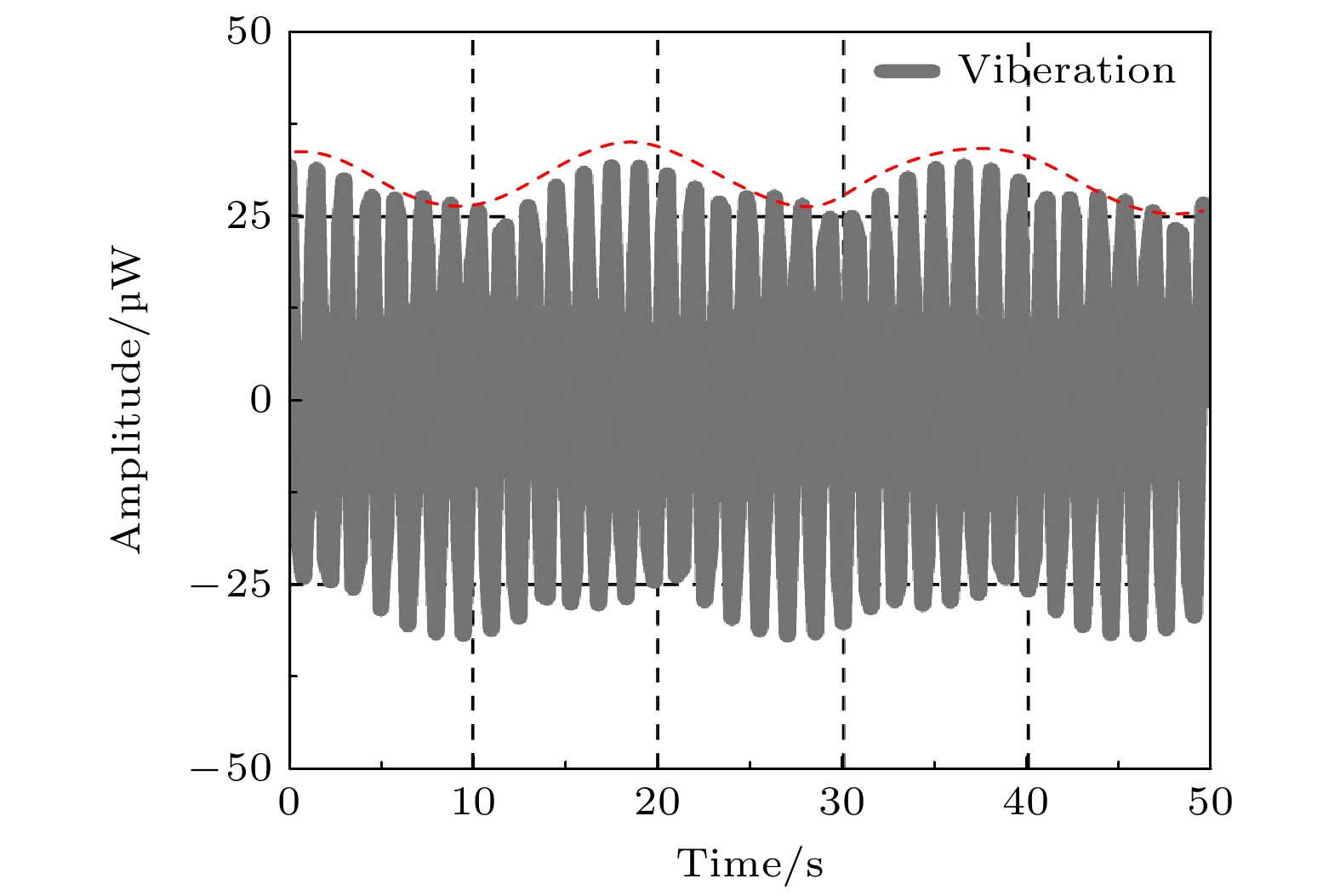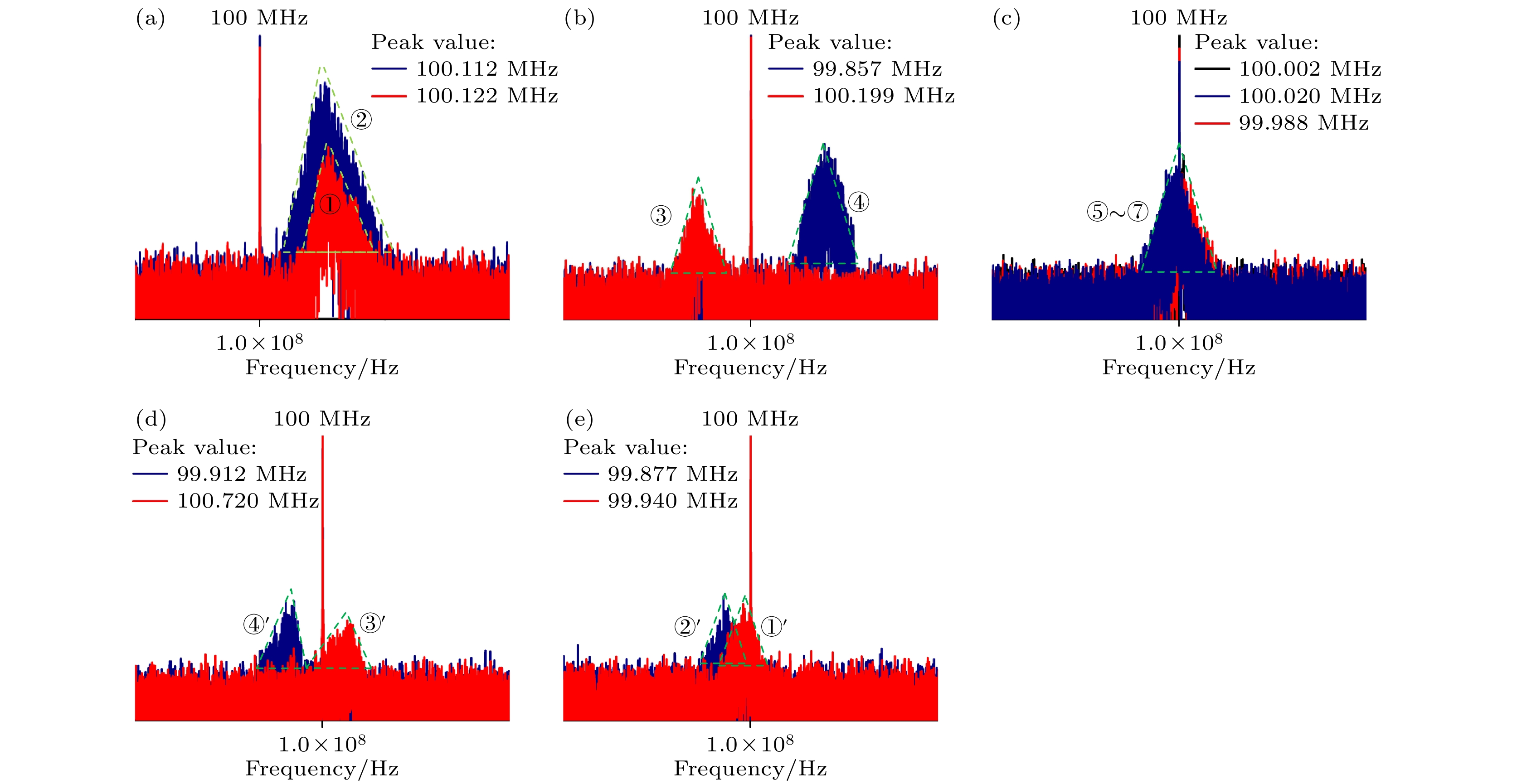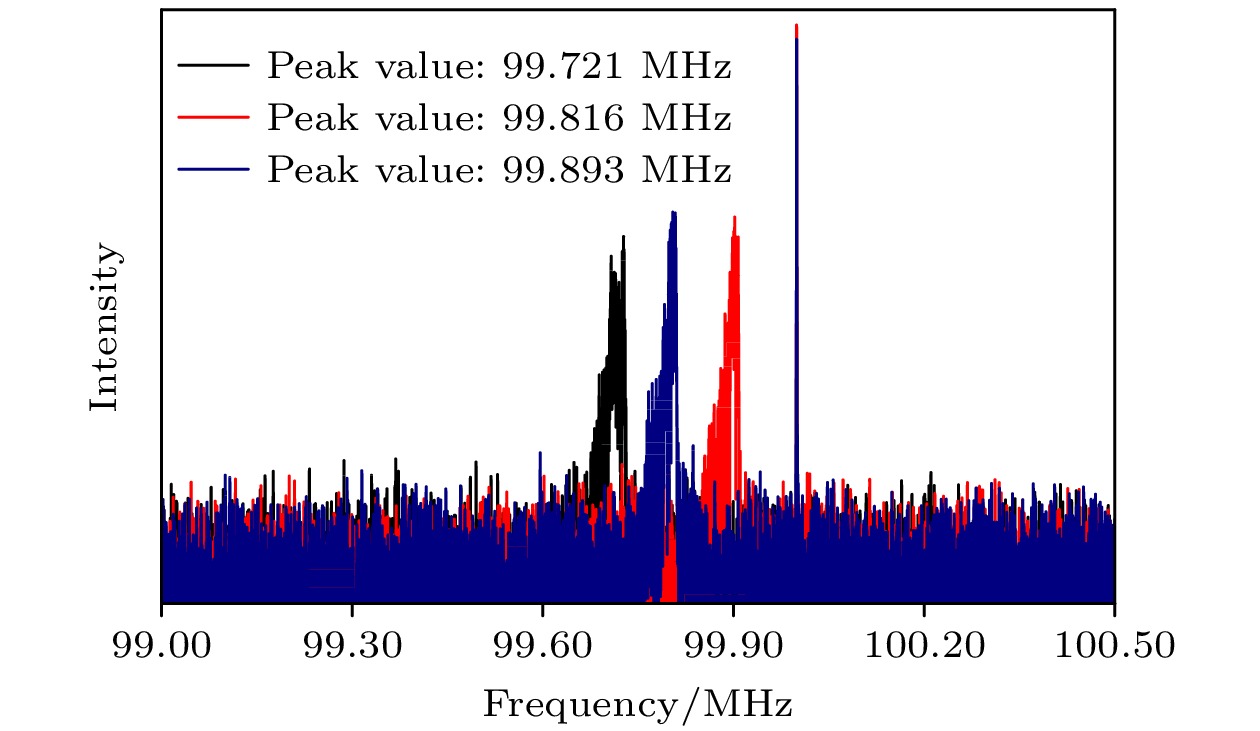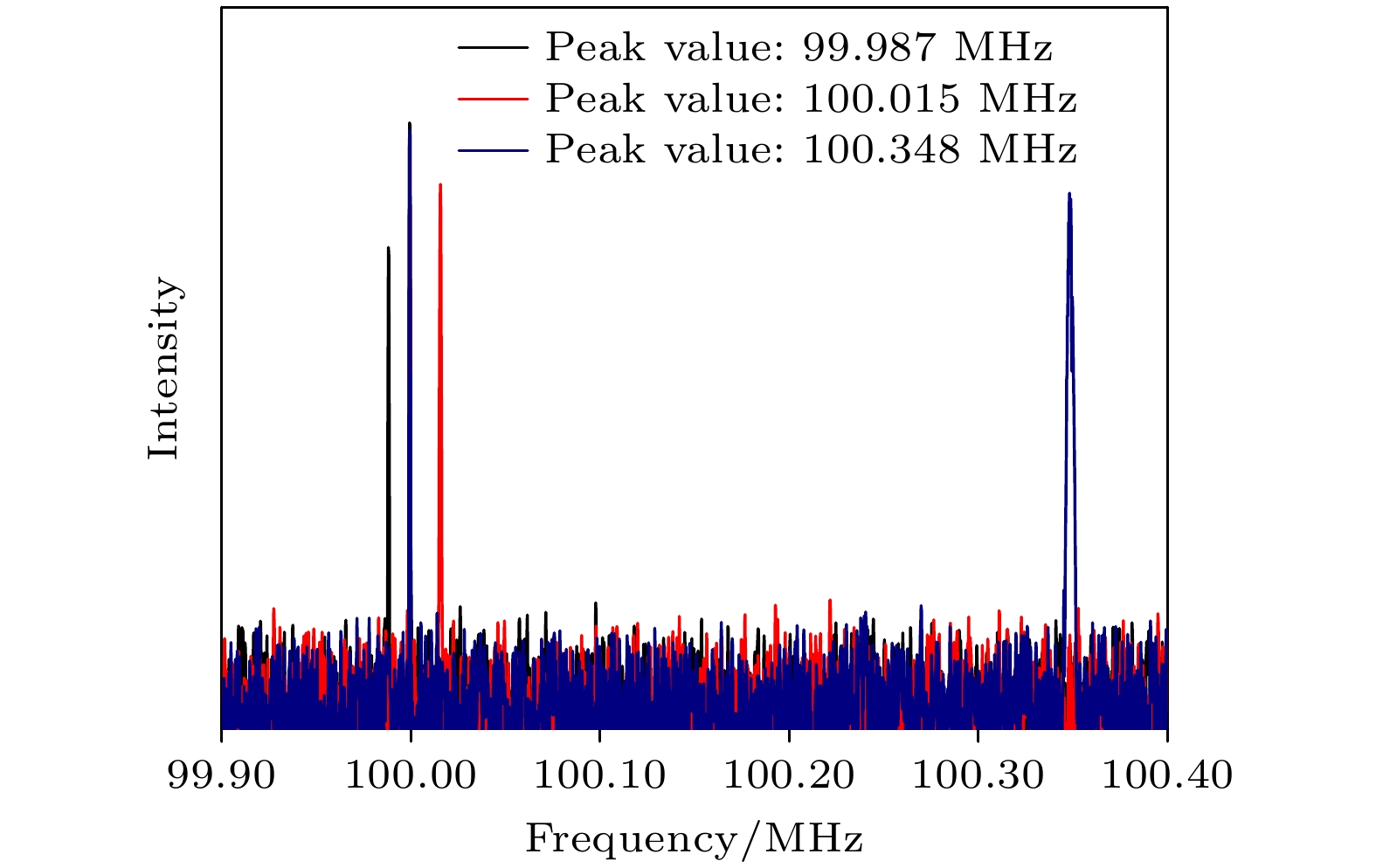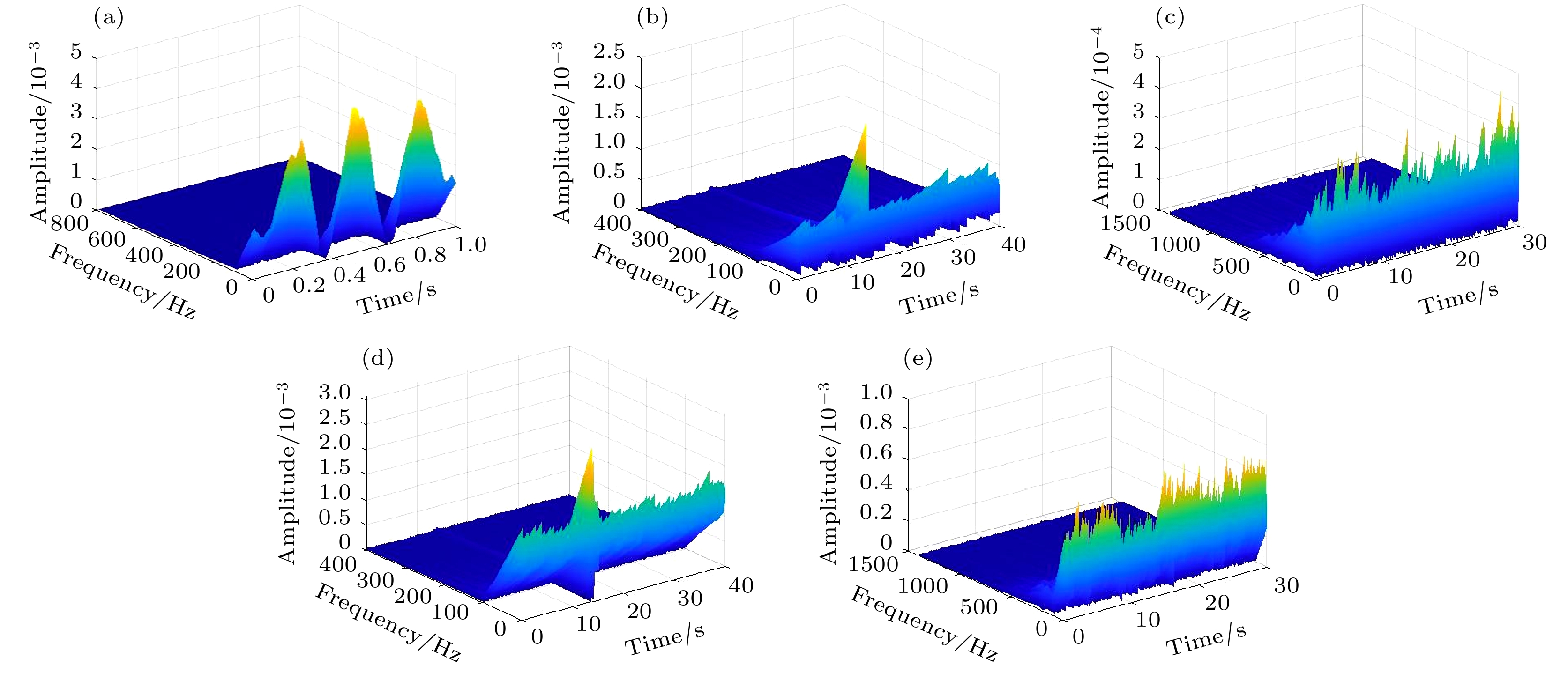-
The micro-Doppler effect is a physical phenomenon generated by the micro-motion of objects and their components, which have a significant influence on improving radar detection and resolution capability and also enhancing the radar imaging and target recognition performance. The extraction of micro-Doppler frequency, as a commonly used time-frequency analysis tool, is of great significance in extracting and reconstructing the signal with micro-motion targets. The micro-motion characteristics for moving targets can be verified by using simulation through combining the theory of micro-Doppler effect with the frequency domain model of electromagnetic waves. The simulation research on the micro-motion characteristics of a three-dimensional target is conducted by using the finite element method. The influences of environmental conditions such as relative humidity, visibility, and the presence or absence of turbulence on echo intensity and time-frequency relationship are investigated theoretically. The simulation results indicate that parameters such as relative humidity and visibility, which affect the atmospheric attenuation coefficient, can reduce echo intensity and the period of time-frequency curve. By triggering off beam drift in the transmission path, turbulence can lead to “frequency shift deformation” of the time-frequency curve, degrading the extraction of target motion attitude. A motion attitude classification method is proposed in order to study the micro-Doppler effect better. According to whether the frequency shift changes with time, the motion attitude can be divided into frequency shift time-invariant motion and time-variant motion. Frequency shift time-variant motion includes translation, rolling and vibration. Vibration and rolling are motions that periodically change with time, requiring the comparison of instantaneous frequency shifts at any three times within a cycle. Translation is a time-variant motion with irregular frequency shifts over time, which involves studying instantaneous frequency shifts at any three times. Transient frequency shifts should be analyzed and compared at different times for these motions. The frequency shift time-invariant motion is mainly rotation obtained experimental results indicate that the amplitude, plus-minus, and spectral width of frequency shift at different positions are aimed at inverting the target shape, attitude, direction and velocity. Demodulating one-dimensional data obtained from the FFTshift function can obtain the time-frequency-intensity relationship. This multi-parameter analysis method is a multi-dimensional processing method widely used in the fields of radar, sonar, and communication. The above research is conductive to the measurement of target macroscopic shape properties and the extraction of microscopic motion information, which lays the foundation for radar detection and recognition.
-
Keywords:
- micro-Doppler effect /
- multi-feature motion /
- target recognition /
- time-frequency-intensity relationship
[1] 郭力仁, 胡以华, 董骁, 李敏乐 2018 67 150701
 Google Scholar
Google Scholar
Guo L R, Hu Y H, Dong X, Li M L 2018 Acta Phys. Sin. 67 150701
 Google Scholar
Google Scholar
[2] Peng J Q, Xu W F, Liang B, Wu A G 2018 IEEE Sens. J. 19 8
 Google Scholar
Google Scholar
[3] 高飞, 南恒帅, 黄波, 汪丽, 李仕春, 王玉峰, 刘晶晶, 闫庆, 宋跃辉, 华灯鑫 2018 67 030701
 Google Scholar
Google Scholar
Gao F, Nan H S, Huang B, Wang L, Li S C, Wang Y F, Liu J J, Yan Q, Song Y H, Hua D X 2018 Acta Phys. Sin. 67 030701
 Google Scholar
Google Scholar
[4] 李艳辉, 吴振森, 宫彦军, 张耿, 王明军 2010 59 6988
 Google Scholar
Google Scholar
Li Y H, Wu Z S, Gong Y J, Zhang G, Wang M J 2010 Acta Phys. Sin. 59 6988
 Google Scholar
Google Scholar
[5] Liu Y, Zhang Z, Burla M, Eggleton B J 2022 Laser Photonics Rev. 4 16
 Google Scholar
Google Scholar
[6] Bradley M, Sabatier J M 2012 J. Acoust. Soc. Am. 131 3
 Google Scholar
Google Scholar
[7] Thayaparan T, Stanković L, Djurović I 2008 J. Franklin. I 345 700
 Google Scholar
Google Scholar
[8] Anderson M G 2008 Ph. D. Dissertation (Austin: The university of Texas at Austin
[9] Ji J Z, Jiang J X, Allann A A, Shu C, Huang P 2017 Optik 150 1
 Google Scholar
Google Scholar
[10] Terras R 1981 J. Conput. Phys. 39 233
 Google Scholar
Google Scholar
[11] Antar M M Y, Hendry A 1985 Electron. Lett. 21 22
 Google Scholar
Google Scholar
[12] Zhao Y C, Su Y 2021 IET. Microw. Antenna P. 15 7
 Google Scholar
Google Scholar
[13] Inomata H, Igarashi T 1975 Jpn. J. Appl. Phys. 14 11
 Google Scholar
Google Scholar
[14] Chen V C, Li F, Ho S S, Wechsler H 2006 IEEE T. Aero. Elec. Sys. 42 1
 Google Scholar
Google Scholar
[15] Chen V C 1997 Opt. Eng. 4 36
[16] 王童, 童创明, 李西敏, 李昌泽 2015 64 210301
 Google Scholar
Google Scholar
Wang T, Tong C M, Li X M, Li C Z 2015 Acta Phys. Sin. 64 210301
 Google Scholar
Google Scholar
[17] Li T M, Wen B Y, Tian Y W, Wang S J, Yin Y K 2019 IEEE Access 7 101527
 Google Scholar
Google Scholar
[18] Chen S, Zhang H Y, Zhao C M, Chen H, Fan Y, Wang L 2022 Def. Technol. 28 146
 Google Scholar
Google Scholar
[19] Chen S, Zhang H Y, Jin F H, Zhao C M, Wang L 2023 Heliyon 9 e16728
 Google Scholar
Google Scholar
[20] Jia J F, Kim H K, Hielscher A H 2015 J. Quant. Spectrosc. Ra. 167 10
 Google Scholar
Google Scholar
[21] Abushagur A A G, Abbou F M, Abdullah M, Misran N 2011 Opt. Eng. 50 7
[22] Cheng X, Zhang D Z, Li X, Li X T, Chen R J 2021 J. Phys. Conf. Ser. 1971 1
 Google Scholar
Google Scholar
[23] Kim J, Baik J 2004 Atmos. Environ. 38 19
 Google Scholar
Google Scholar
[24] 陈燕 2009 气象与环境科学 32 4
 Google Scholar
Google Scholar
Chen Y 2009 Meteor. Environ. Sci. 32 4
 Google Scholar
Google Scholar
[25] 冷长林 2007 博士学位论文 (天津: 天津大学)
Leng C L 2007 Ph. D. Dissertation (Tianjin: Tianjin University
[26] Philip G, Sammy W H, Thomson J A, Dale L B 2000 Proc. Spie. 4035 2000
 Google Scholar
Google Scholar
-
图 8 自旋1锥体上位置的频移示意图 (a)—(c)顺时针自旋1锥体上位置①—⑤的频移; (d)—(f)逆时针自旋1锥体上位置①—⑤的频移
Figure 8. Diagrams of micro-Doppler at different positions of the cone with rotation 1: (a)—(c) Frequency shift of a cone at positions ①—⑤ with the clockwise rotation 1; (d)—(f) frequency shift of a cone at positions ①—⑤ with the counterclockwise rotation 1.
图 10 振动目标上图2(a)中位置①处一个周期内三个时刻对应的频移
Figure 10. Frequency shift at three times in a cycle on position ① in Fig. 2 (a) of a vibrating target.
图 11 翻滚目标不同位置的微多普勒频移图 (a)—(e)顺时针翻滚圆锥上位置①—⑤处的频移; (f)—(j)逆时针翻滚圆锥上位置①—⑤处的频移
Figure 11. Diagrams of micro-Doppler frequency shift at different positions of rolling targets: (a)—(e) Frequency shifts at positions ①—⑤ of a clockwise rolling cone; (f)—(j) frequency shifts at positions ①—⑤ of a counterclockwise rolling cone.
表 1 不同位置上的频移和频谱宽度
Table 1. Frequency shift and spectrum width at different locations.
物理意义 赋值 备注 温度 298 K 实验室温度为25 ℃ 相对湿度 0.5 晴天 0.8 阴天 能见度 23 km 晴天 12 km 阴天 室内风速 ~0.1 m/s — 材料 空气 — 铝 — 欧拉角 (20°, 30°, 50°) — 光斑半径 0.2 cm — 表 2 仿真中使用的大气湍流模型参数
Table 2. Parameters used in numerical simulations.
参数 Cε1 Cε2 Cμ σk σε 赋值 1.44 1.92 0.09 1 1.3 表 3 不同位置上的频移和频谱宽度
Table 3. Frequency shift and spectral width at different positions.
位置 峰值
/MHz正负性 谱线宽度
/MHz注释 ① 0.112 正值 0.192 轴对称 ② 0.122 0.117 ①' –0.083 负值 0.123 ②' -0.095 0.060 ③ 0.199 正值 0.100 轴对称 ④ –0.143 负值 0.145 ③' –0.088 负值 0.061 ④' 0.720 正值 0.057 ⑤ –0.012 约为 0 0.130 位于对称轴上 ⑥ 0.002 0.117 ⑦ 0.020 0.0017 -
[1] 郭力仁, 胡以华, 董骁, 李敏乐 2018 67 150701
 Google Scholar
Google Scholar
Guo L R, Hu Y H, Dong X, Li M L 2018 Acta Phys. Sin. 67 150701
 Google Scholar
Google Scholar
[2] Peng J Q, Xu W F, Liang B, Wu A G 2018 IEEE Sens. J. 19 8
 Google Scholar
Google Scholar
[3] 高飞, 南恒帅, 黄波, 汪丽, 李仕春, 王玉峰, 刘晶晶, 闫庆, 宋跃辉, 华灯鑫 2018 67 030701
 Google Scholar
Google Scholar
Gao F, Nan H S, Huang B, Wang L, Li S C, Wang Y F, Liu J J, Yan Q, Song Y H, Hua D X 2018 Acta Phys. Sin. 67 030701
 Google Scholar
Google Scholar
[4] 李艳辉, 吴振森, 宫彦军, 张耿, 王明军 2010 59 6988
 Google Scholar
Google Scholar
Li Y H, Wu Z S, Gong Y J, Zhang G, Wang M J 2010 Acta Phys. Sin. 59 6988
 Google Scholar
Google Scholar
[5] Liu Y, Zhang Z, Burla M, Eggleton B J 2022 Laser Photonics Rev. 4 16
 Google Scholar
Google Scholar
[6] Bradley M, Sabatier J M 2012 J. Acoust. Soc. Am. 131 3
 Google Scholar
Google Scholar
[7] Thayaparan T, Stanković L, Djurović I 2008 J. Franklin. I 345 700
 Google Scholar
Google Scholar
[8] Anderson M G 2008 Ph. D. Dissertation (Austin: The university of Texas at Austin
[9] Ji J Z, Jiang J X, Allann A A, Shu C, Huang P 2017 Optik 150 1
 Google Scholar
Google Scholar
[10] Terras R 1981 J. Conput. Phys. 39 233
 Google Scholar
Google Scholar
[11] Antar M M Y, Hendry A 1985 Electron. Lett. 21 22
 Google Scholar
Google Scholar
[12] Zhao Y C, Su Y 2021 IET. Microw. Antenna P. 15 7
 Google Scholar
Google Scholar
[13] Inomata H, Igarashi T 1975 Jpn. J. Appl. Phys. 14 11
 Google Scholar
Google Scholar
[14] Chen V C, Li F, Ho S S, Wechsler H 2006 IEEE T. Aero. Elec. Sys. 42 1
 Google Scholar
Google Scholar
[15] Chen V C 1997 Opt. Eng. 4 36
[16] 王童, 童创明, 李西敏, 李昌泽 2015 64 210301
 Google Scholar
Google Scholar
Wang T, Tong C M, Li X M, Li C Z 2015 Acta Phys. Sin. 64 210301
 Google Scholar
Google Scholar
[17] Li T M, Wen B Y, Tian Y W, Wang S J, Yin Y K 2019 IEEE Access 7 101527
 Google Scholar
Google Scholar
[18] Chen S, Zhang H Y, Zhao C M, Chen H, Fan Y, Wang L 2022 Def. Technol. 28 146
 Google Scholar
Google Scholar
[19] Chen S, Zhang H Y, Jin F H, Zhao C M, Wang L 2023 Heliyon 9 e16728
 Google Scholar
Google Scholar
[20] Jia J F, Kim H K, Hielscher A H 2015 J. Quant. Spectrosc. Ra. 167 10
 Google Scholar
Google Scholar
[21] Abushagur A A G, Abbou F M, Abdullah M, Misran N 2011 Opt. Eng. 50 7
[22] Cheng X, Zhang D Z, Li X, Li X T, Chen R J 2021 J. Phys. Conf. Ser. 1971 1
 Google Scholar
Google Scholar
[23] Kim J, Baik J 2004 Atmos. Environ. 38 19
 Google Scholar
Google Scholar
[24] 陈燕 2009 气象与环境科学 32 4
 Google Scholar
Google Scholar
Chen Y 2009 Meteor. Environ. Sci. 32 4
 Google Scholar
Google Scholar
[25] 冷长林 2007 博士学位论文 (天津: 天津大学)
Leng C L 2007 Ph. D. Dissertation (Tianjin: Tianjin University
[26] Philip G, Sammy W H, Thomson J A, Dale L B 2000 Proc. Spie. 4035 2000
 Google Scholar
Google Scholar
Catalog
Metrics
- Abstract views: 5069
- PDF Downloads: 132
- Cited By: 0















 DownLoad:
DownLoad:


